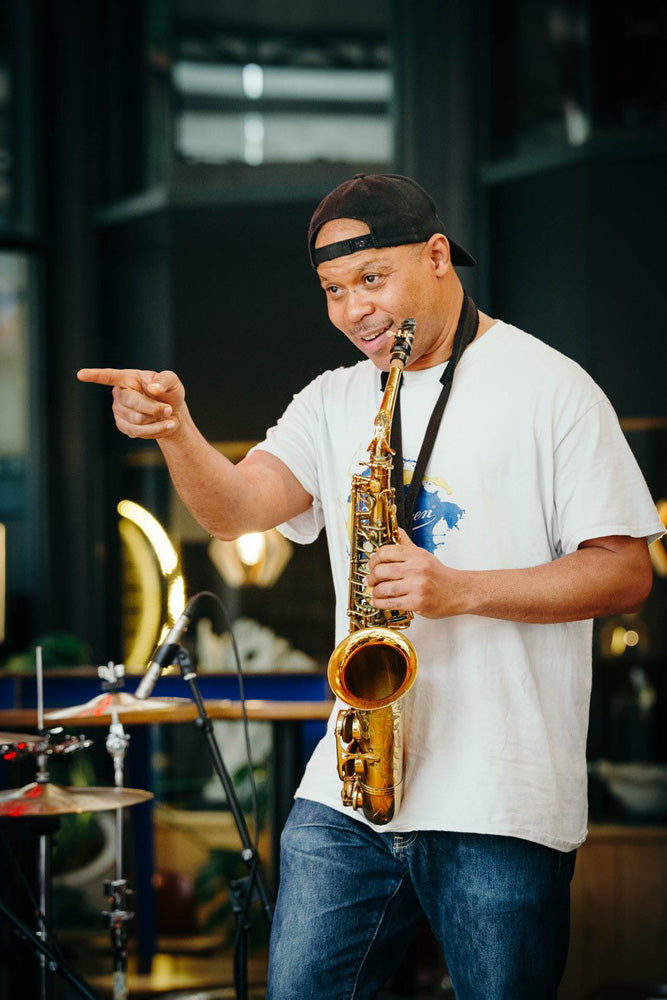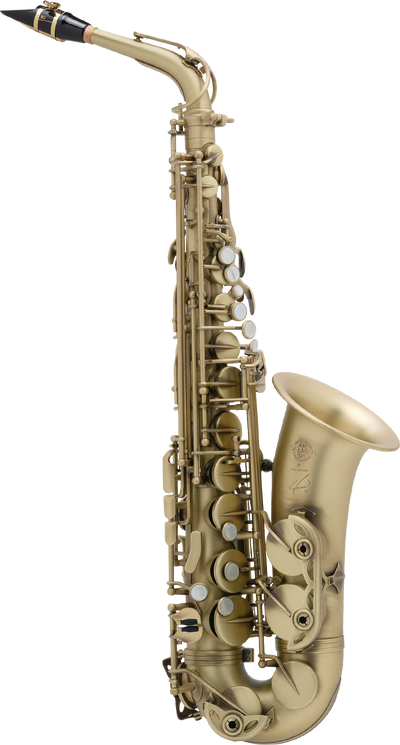Steve Coleman began playing music just days before his 14th birthday as a freshman at South Shore High School on the south side of Chicago. His first instrument was violin but later that year he switched to the alto saxophone. For three years Steve studied the basics of music and saxophone technique, then he decided that he wanted to learn how to improvise.
Hitchhiking to New York and staying at a YMCA in Manhattan for a few months, he scuffled until he picked up a gig with the Thad Jones-Mel Lewis Big Band, which led to stints with the Sam Rivers Big Band, Cecil Taylor’s Big Band and others. Soon he began cutting records as a sideman with those leaders as well as pivotal figures like David Murray, Doug Hammond, Dave Holland, Mike Brecker and Abbey Lincoln.
Even playing with these masters only went part of the way toward paying the rent, and so for the next four years Coleman spent a good deal of time playing in New York City’s streets for small amounts of money with a street band that he put together with trumpeter Graham Haynes, the group that would evolve into the ensemble Steve Coleman and Five Elements. It is this group that would serve as the flagship ensemble for most of Steve’s activities.
Within a short time the group began finding a niche in tiny, out-of-the-way clubs in Harlem and Brooklyn where they continued to hone their developing concept of improvisation within nested looping structures. These were ideas based on how to create music from one’s experiences, which became the foundation which Coleman and friends call the M-Base concept.
In June 1994 Steve formed the group Renegade Way, at that time consisting of Steve Coleman and Greg Osby on alto saxophones, Joe Lovano and Craig Handy on tenor saxophones, Kenny Davis on bass and Yoron Israel on drums. This group also did its first tour of Europe in late august 1995 (with Bunky Green on alto taking Greg’s place and Ralph Peterson on drums instead of Yoron). A later version of this group consisted of Steve Coleman and Greg Osby on alto saxophones, Gary Thomas and Ravi Coltrane on tenor saxophones, Anthony Tidd on bass and Sean Rickman on drums, however this group has never recorded a commercially released CD.
Partially funded by a grant from Arts International (1997), Steve took a group of musicians from America and Cuba to Senegal to collaborate and participate in musical and cultural exchanges with the musicians of the local Senegalese group Sing Sing Rhythm. Using his own funds he also led his group Five Elements to the south of India in January-February of 1998 to participate in a cultural exchange with different musicians in the Carnatic music tradition. Steve and his group also gave workshops in the Brahavadhi Center headed by the renowned musicologist Dr. K. Subramanian.
2006-2007 saw a flurry of activity, with Steve releasing his first solo saxophone recording called Invisible Paths (on the Tzadik label). Also recorded during this time were Harvesting Semblances and Affinities and The Mancy of Sound, but these recordings were not released until 2010 and 2011 respectively, after Steve had made a distribution deal with Pi Recordings. All three of these recordings are connected conceptually in that they deal with both an expanded tonal and orchestration conception. This also coincided with Steve’s 2006 meeting with the great Danish composer Per Nørgård, who has had some influence on Steve’s orchestration concepts.
Since 1994 Steve has done a series of performance and educational residencies around the United States and in many other countries (Cuba, India, Ivory Coast, Senegal, Brazil, France) through his non-profit, M-Base Concepts, Inc. This non-profit also has a an online music community website: m-base.net, which promotes educational activities through various multimedia formats and interactive media events.
Photo credit: Dimitri Louis


